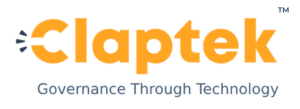Company Profile
Joint Stock Commercial Bank for Foreign Trade of Vietnam, known as Vietcombank. It is a commercial bank in Vietnam.
It’s headquarters is situated in Hanoi, Vietnam. Starting around 31st December 2020, the bank had 116 branches and 474 transaction offices in Vietnam, 3 local subsidiaries, 3 abroad subsidiaries, 3 joint ventures and an overseas representative office in Singapore. As of December 31, 2020, Vietcombank’s market capitalization was $15.5 billion.
Joint Stock Commercial Bank for Foreign Trade of Vietnam was established on 1st April 1963 as Bank for Foreign trade of Vietnam. It was a length off from the Foreign Exchange Bureau of the State Bank of Vietnam to be an exclusive bank for foreign trade.
In 1990, Vietcombank enhanced its administration from being solely centered around foreign trade to becoming a mass-market commercial bank. In 1996, the bank’s official name was changed to Joint Stock Commercial Bank for Foreign Trade of Vietnam.
In 2008, Vietcombank was chosen by the government to be the pilot for the privatization of state-owned companies. The bank was then recorded on the Ho Chi Minh Stock Exchange on 30th June 2009 after a successful IPO that raised US$652 million, making it the greatest Vietnamese firm to conduct an initial public offering.

Business Challenges
The business team (internal audit team & internal inspection team) used to carry out audits manually & then circulate the audit reports to the relevant stakeholders manually. Due to the large size of audit reports, the team often used to face technical difficulties in doing the same.
Similarly, the audit team also used to face challenges in collecting the data from various platforms & consolidating the same in the audit report. The team used to face challenges while selecting the samples for audit. The planning for audits was done by a centralized team manually. The rating was provided manually by the auditor which resulted in various errors.
Claptek’s Solution
To address the various problems faced, a well-defined & established audit tool (Pentana) was provided where the users were able to perform the complete audit cycle starting with planning till the closure of the audit.
The data from various platforms were consolidated in one place & then subsequently brought into the Pentana application to be used by the auditor for performing the audit. The data was readily available to the auditor so that the auditor can check the account & provide the observation (if any).
The automation helped various users to generate various types of dashboards which helped in doing root cause analysis (RCA).
Major Benefits
- Complete audit cycle starting with planning till the closure of the audit
- Subsequently brought into the Pentana application to be used by the auditor
- The auditor is able to check the account and provide the observation for further process
- Generation of various types of dashboards that helped in doing root cause analysis







